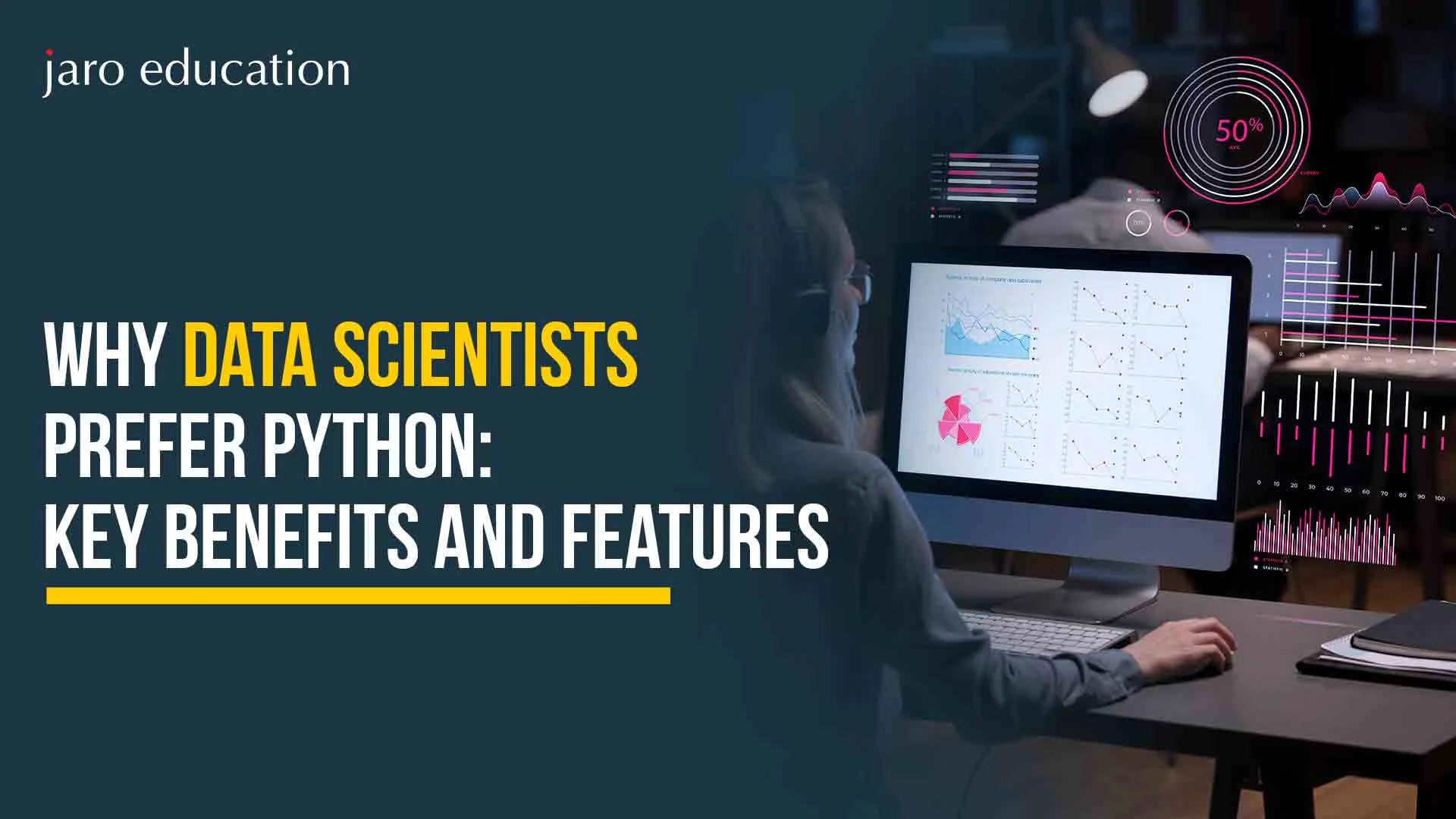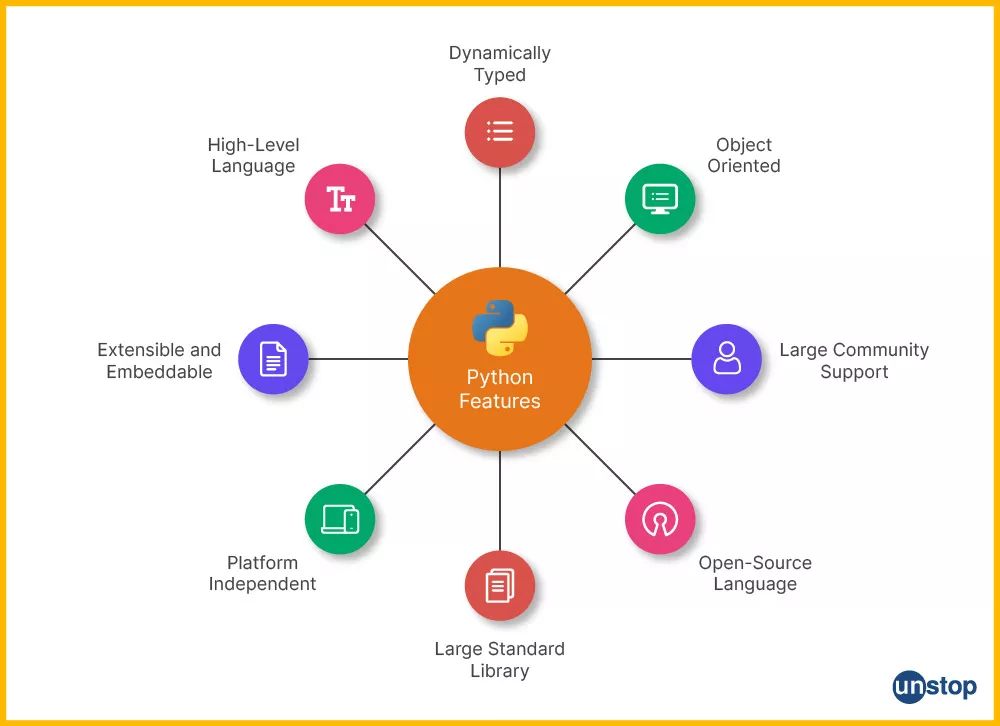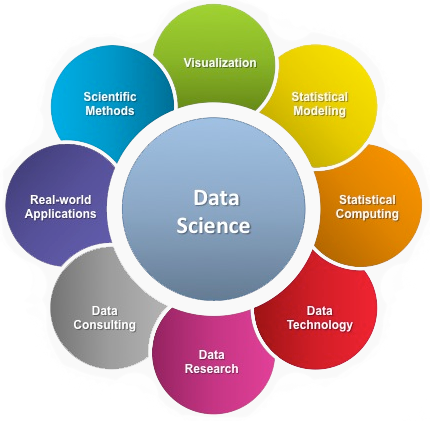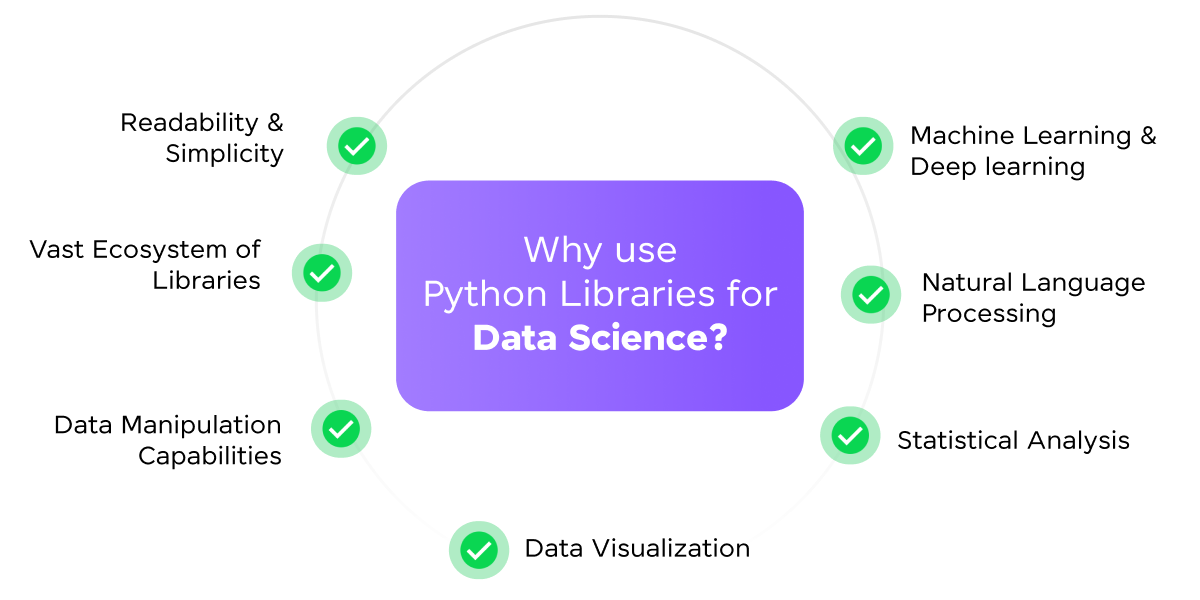Why Data Scientists Prefer Python: Key Benefits and Features
Table of Contents

Did you know that there are over 700 programming languages in the world? Yes, you heard that right. Alongside these programming languages, there are various frameworks and libraries that enhance their functionality. But the question is: why does Python dominate the field of data science? What benefits and features give it an edge over other languages? We will explore these topics in this blog.
Before we begin, let’s provide an overview of what Python for data science is.
Python is a free, dynamic, high-level, open-source programming language developed by Guido van Rossum. It is widely used for developing scientific and complex numerical applications. As a general-purpose, cross-platform, object-oriented language, Python can be applied in various sectors, including data science, artificial intelligence, game development, process automation, and more. With its versatility, it’s no surprise that Python has become one of the most popular programming languages globally.
Stay tuned to learn how Python can be a valuable asset for your career as a data science professional and how you can successfully build your future in this field.
Features of Python Language
Have you ever thought of the reason why the programming language of choice for most data scientists is most often Python for data science? In a recent survey conducted by Kaggle, 93% of data scientists stated they were using Python. The survey encompassed close to 24,000 practitioners in the field, and it is apparent that Python has won the loyalty of many. So, let’s consider what is particularly compelling about Python, which means why data scientists are deciding to use Python.

*unstop.com
Simplicity at its Core
One of the first things that will come to mind about Python is its simplicity. If you’re new to programming, Python for data science is a comforting experience. There is a lot of clarity in its syntax, which allows you to think more about solving problems rather than getting mired in an ambiguous code. Regardless of whether you are writing a simple script or attempting a more complicated project, Python’s readability allows a developer to express their thoughts in a clear and explicit manner.
Expressiveness that Speaks Volumes
Python is also incredibly expressive. This means that in a language such as Java, where several lines of code would be needed to perform a specific task, you may often write it in a single line in Python. You could even picture writing a three-line function in Java, and the same function in Python for data science would take up only one line! You can certainly appreciate this level of expressiveness when you have too many coding techniques and examples to review! In addition to saving time, being an expressive programming language allows for greater clarity in your code, as well as ease of maintenance.
Interpreted and Debug-Friendly
Another advantage of Python is that it is an interpreted language. In other words, Python will run your code line by line, and that can be huge when it comes to debugging. If something goes wrong, you can still easily find out where the error happened without going through a lot of compiled code. It makes the process of development much easier all around!
A Treasure Trove of Libraries
Python for data science really excels in data science and analysis because of its rich ecosystem of libraries and frameworks. No matter if you’re doing data manipulation, Python data science and machine learning, or data visualization, you’ll usually find a library that fits the bill. Libraries like Pandas, sci-kit-learn, NumPy, Matplotlib, and Seaborn can help you accomplish complex operations in just a few lines of code and produce beautiful graphics. This supportive library framework is often one of the greatest reasons data scientists are drawn to Python.
Seamless Integration
Python and data science also have exceptional capabilities for interface programming with other languages. If your existing application is written in C, C++, or Java, you can easily integrate it with Python into your application development. You can benefit from the best of both worlds, and it keeps your workflow smooth and consistent. It is all about flexibility, and Python has it in abundance!
Automation Made Easy
If you are an automation enthusiast, Python for data science is a paradise for you. It has frameworks like PyUnit to organize and implement unit tests easily. Even if you aren’t an expert in Python, it is simple to get up and running with unit testing. Most importantly, it will generate a test report in a fraction of a time, saving you a considerable amount of time and effort. This automation is vital for developers to make their debugging process smooth and efficient.
Scalability for the Future
In the world of programming, scalability is crucial. Python stands out as one of the most scalable languages available today. Its flexibility makes it suitable for developing complex applications without compromising performance. Whether you’re building a small script or a large web application, Python can grow with your needs.
A Supportive Community
One of Python’s biggest assets is its supportive community. This global network of developers is always ready to lend a helping hand. Whether you need assistance troubleshooting code, learning new concepts, or finding resources, you’ll find a supportive community eager to help. This camaraderie makes the learning curve less intimidating for newcomers.
The Benefits of Python
So, why do so many people choose Python? Let’s take a look at some of the benefits that have made it widely popular among developers and data scientists.

*devopsschool.com
Easy to Learn
As mentioned earlier, Python for data science has a simple, clean syntax. This makes it one of the easiest programming languages to learn. PEP 8, the style guide we discussed, gives a series of best practices to format code to help ensure consistency and readability for projects.
Extensive Libraries at Your Fingertips
Python and data science come with a wealth of libraries that cater to various domains, from web development to machine learning. Its standard library is packed with tools that cover web services, internet protocols, and more. Many common programming tasks are pre-scripted, meaning you can accomplish a lot without writing extensive code from scratch.
Free and Open-Source
Python is convenient not only for its ease of use but also because it is free to download and use, meaning you can code in a matter of minutes. It is open-source in nature, which allows for commercial use in your business without initial licensing costs, making Python a great fit for startups and individual developers.
A Thriving Community
Python’s open-source nature has created a vibrant community to constantly improve the language. The support forums popular with developers comprise many folks helping, asking questions, and collaborating to improve Python.
Boosted Productivity
The object-oriented nature of Python for data science also shines in process control. The increase in development and productivity potential incorporates strong integration capabilities and considerable text manipulation options. If you want to create applications that use a variety of network protocols, Python is an excellent option!
Easy Integration Across Platforms
Python simplifies the process of developing web services by integrating seamlessly with other technologies. If you’re using XML or another markup language, Python works easily across today’s modern operating systems on the same bytecode. This dual benefit—cross-platform compatibility plus third-party modules—allows Python to interact with multiple languages/platforms without much difficulty.
Unique Characteristics
Python for data science has carved a niche for itself due to its unique characteristics. It’s interactive, interpreted, modular, dynamic, object-oriented, portable, high-level, and can be extended with C and C++. These features contribute to Python’s versatility and appeal across different domains.
Popular Data Science Libraries in Python

One of the primary reasons Python is preferred for data science is its access to so many useful libraries. These libraries are essential in streamlining complex and time-consuming tasks, which increases productivity and makes it easier for data scientists to analyze and visualize data. Here are some of the most commonly used Python data science libraries.
Pandas: Pandas is one of the most popular libraries for data manipulation and analysis. It is particularly useful for dealing with large amounts of structured data. Its intuitive functions allow you to easily clean, filter, and manipulate data. The two fundamental data structures in Pandas are Series and DataFrame. Series is a one-dimensional array, while DataFrame is a two-dimensional table, similar to a spreadsheet. This makes perfect sense for organizing and analyzing data.
NumPy: NumPy is short for Numerical Python and is a core library for mathematical operations. The library supports large, multi-dimensional arrays and matrices. One of NumPy’s main features is vectorization, which allows for mathematical operations to be applied to an entire array at once rather than an element-by-element loop. This can save significant time when executing tasks that involve heavy calculations.
Matplotlib: If you are looking to visualize data, Matplotlib is the library for you. Matplotlib is one of the largest libraries to create a range of static visualizations, animated visualizations, and interactive visualizations of all sorts in Python for data science. Need to make a line graph? Matplotlib has it. Need to visualize how the collection of your data compares against a pie chart? Guess what? You can do that with Matplotlib. Need to make a histogram out of your data, too? You bet. Without a doubt, clear visualizations are critical for supporting conclusions about data patterns and illustrating your conclusions to others.
Scikit-learn: If you are thinking of diving into machine learning, scikit-learn is an essential library. It provides a vast framework for implementing most of the commonly used machine learning algorithms. With scikit-learn, machine learning operations like classification, regression, and clustering become much easier to implement than starting from scratch. This library makes data mining and analyzing data much easier and allows you to devote your time to solving real-world problems instead of implementation.
Where Can I Learn Python for Data Science?
If you want to become a data scientist using Python, sign up for online courses available at Jaro Education.
We are a leading online higher education and upskilling company providing reputed online courses and certification programmes in collaboration with India’s top institutions. Our courses are here to equip participants to be prepared for the challenging and quickly growing field. From management to marketing and even technology, we have various courses available on our website. Apart from this, at Jaro Education, we also provide career counselling and academic guidance to every learner who is passionate about building a thriving career.
So, if you want to excel in the in-demand field of data science, the given below programmes offered by prestigious and accredited universities through Jaro Education are designed to prepare you for analytical and leadership roles across various sectors. They are:
| Course | University |
|---|---|
| MSc in Data Science | Manipal Academy of Higher Education |
| Online Master of Science (Data Science) | Symbiosis School for Online and Digital Learning (SSODL) |
Conclusion
In a nutshell, Data analysts find Python an invaluable asset. It is extremely popular amongst data scientists as a programming language due to the sheer capabilities and scientific data libraries that are available for use. Python is also built to perform repetitive tasks and to handle the movement of data within workflows.
Anyone who has worked with large datasets understands there will be a considerable amount of repetition occurring throughout the analysis task. The ability to effectively and efficiently let Python handle many of the tasks frees data scientists to focus on the other important parts of their job. So, if you need assistance regarding starting a career as a data scientist, reach out to us at Jaro Education.
Frequently Asked Questions
What is data science in Python?
Python is a favourite in the data science community mainly because of its user-friendly nature. With powerful libraries like Pandas and NumPy at its disposal, it excels at data handling, analysis, and visualization. Additionally, the strong support from its community makes it easier for data scientists to find solutions and resources.
What are the standout features of Python for data analysis?
When it comes to data analysis, Python shines with several key features. Its simplicity and expressive syntax make coding intuitive, while a vast ecosystem of libraries provides tools for a variety of tasks. Plus, its ability to integrate with other programming languages and scale up for larger projects means that data scientists can tackle complex problems efficiently.
How does Python enhance data visualization?
Python enhances data visualization through libraries like Matplotlib and Seaborn, enabling data scientists to craft informative charts, graphs, and interactive visualizations. These tools are essential for uncovering data patterns and effectively communicating findings to stakeholders.
What is Python’s role in machine learning?
Python plays a crucial role in machine learning, thanks to libraries such as scikit-learn and TensorFlow. It streamlines the processes of data preprocessing, model training, and evaluation, making it the preferred language for building and deploying machine learning models.






![Salary-of-BCA-Graduates-Top-Job-Roles-[2025]](https://jaro-website.s3.ap-south-1.amazonaws.com/2025/10/Salary-of-BCA-Graduates-Top-Job-Roles-2025-1024x576.webp)










